Safety Check is a security feature on your iPhone in iOS 16 that allows you to quickly see what information you’re sharing with people and what permissions you have given to apps. From here, you can instantly revoke all permissions for all people and apps or review them on a per-person, per-app, or per-information-type basis.
In this tutorial, we will tell you everything you need to know about Safety Check and how to use it to keep yourself and your data safe in unforeseen situations.
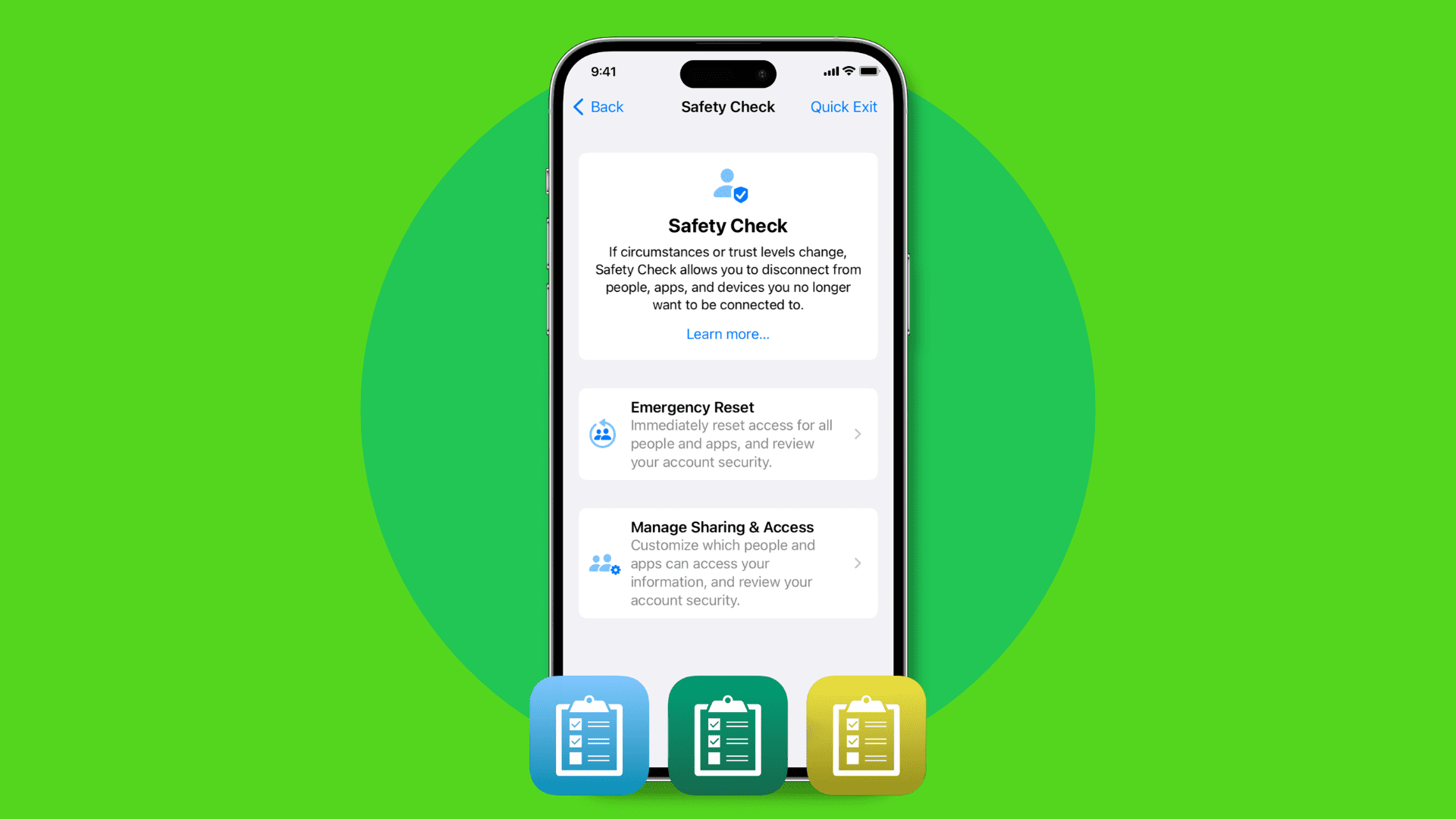
When do I need to use Safety Check?
During a relationship, you may choose to share things like location and iCloud photos with your significant other. It’s also likely that the other person’s Face ID or Touch ID is added to your iPhone. Or they know your Apple ID password and iPhone passcode.
If at some point, the relationship ends, and things take a turn for the worse, your iPhone now offers you to instantly revoke all the shared permissions. And you can do that in one go with just a few taps. Or if you have time, you can slowly audit all the permissions and withdraw them on a per-person, per-feature (like location), or per-app basis.
Besides bad relationships, Safety Check can also be used to review all your app permissions and manage them. Plus, you can use it in general, to strengthen your device security by changing your Apple ID password, resetting the Face ID, updating Emergency Contacts, and more.
Overall, it’s one of the important features every iPhone user must know about. And we are here to tell you all about it.
How to use Safety Check on iPhone
1) Open the Settings app and tap Privacy & Security.
2) Scroll down and tap Safety Check.
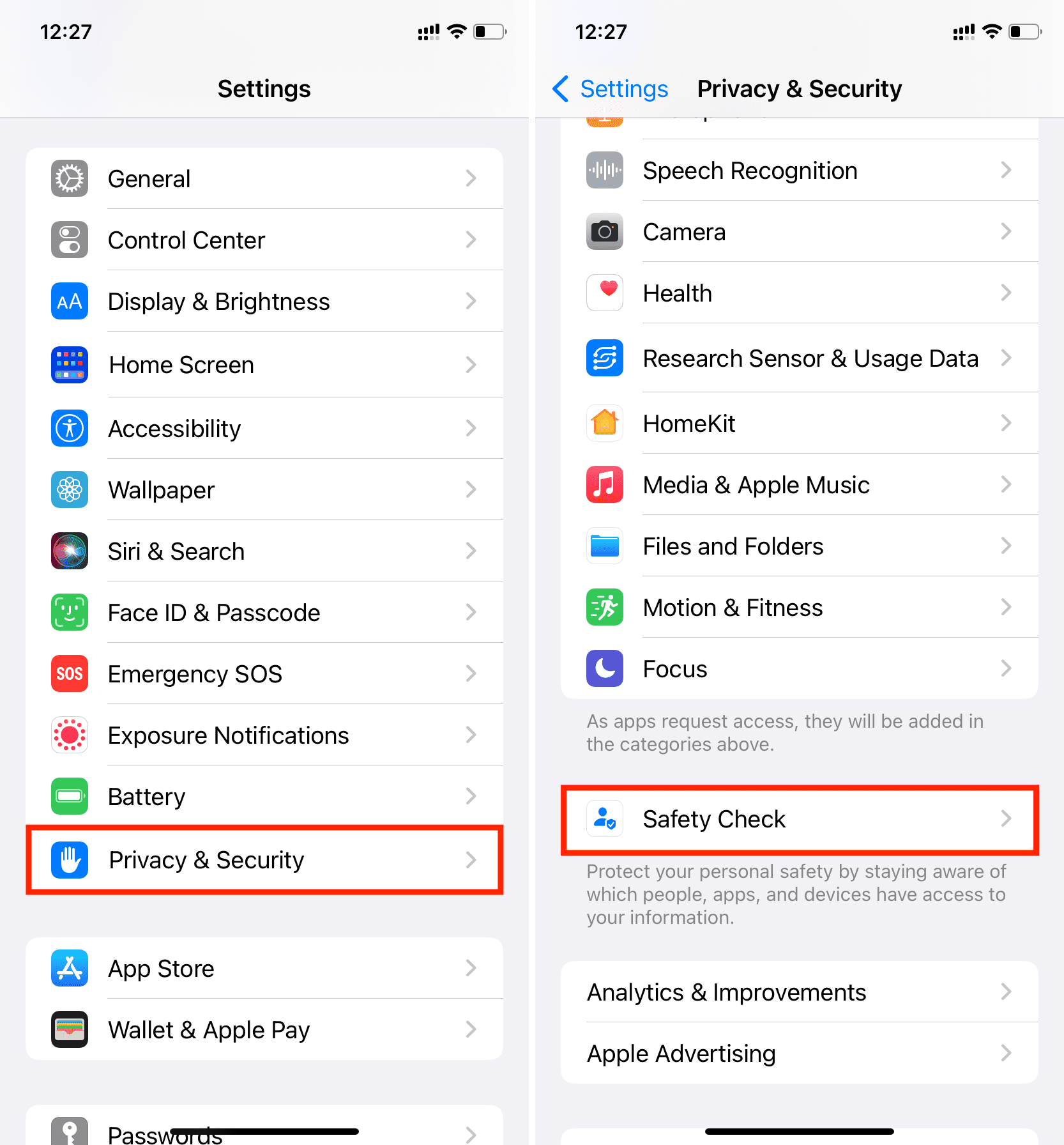
3) Here, you have three options that we’ll cover in details:
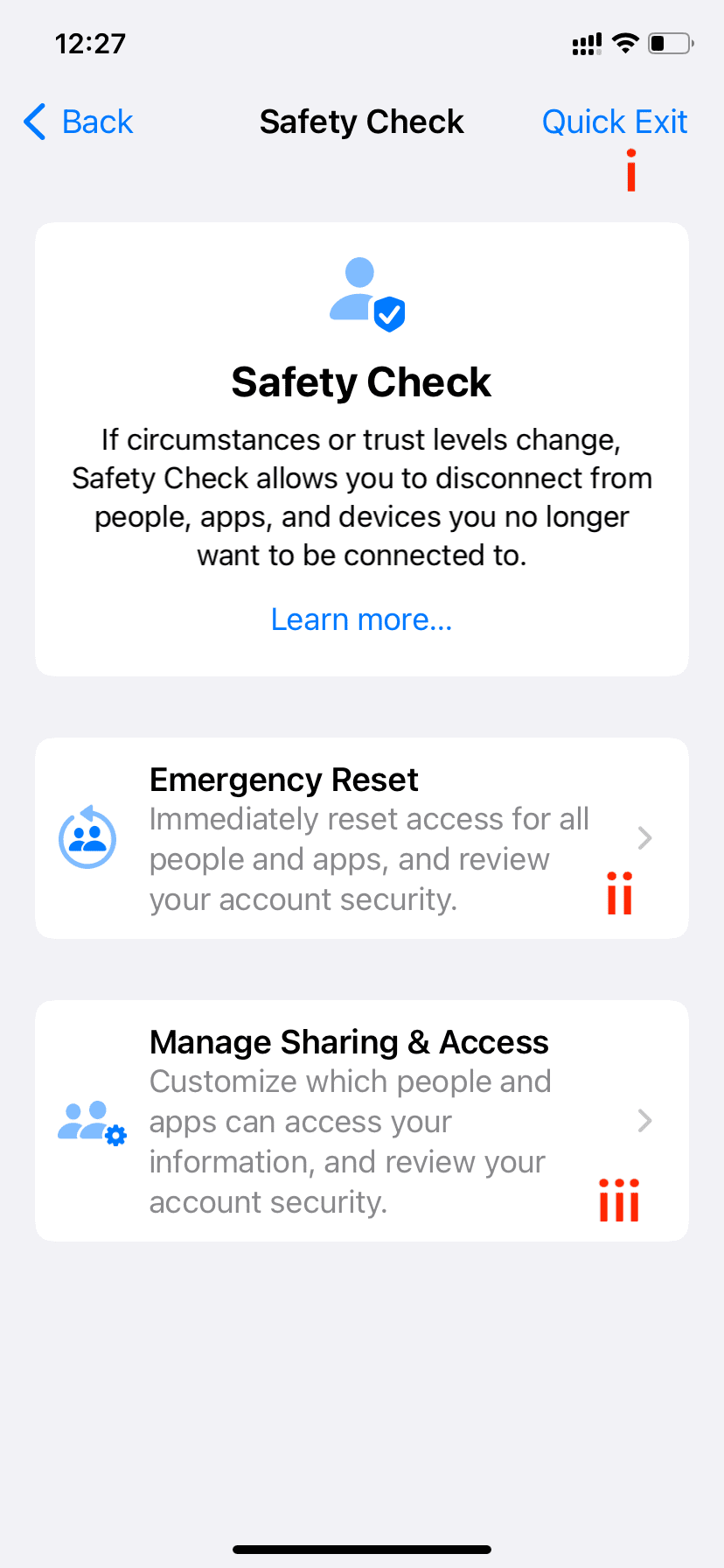
i. Quick Exit
The Quick Exit button sits in the top right corner and tapping it saves all the changes you have made up to that point and instantly takes you out of the Settings app onto the Home Screen. It kills the Settings app and doesn’t reveal what you were doing there. If you or someone who forcefully took physical access of your iPhone reopens the Settings app from the App Switcher, it shows the first Settings page and not the Safety Check page. Thus, they can’t know what you were doing!
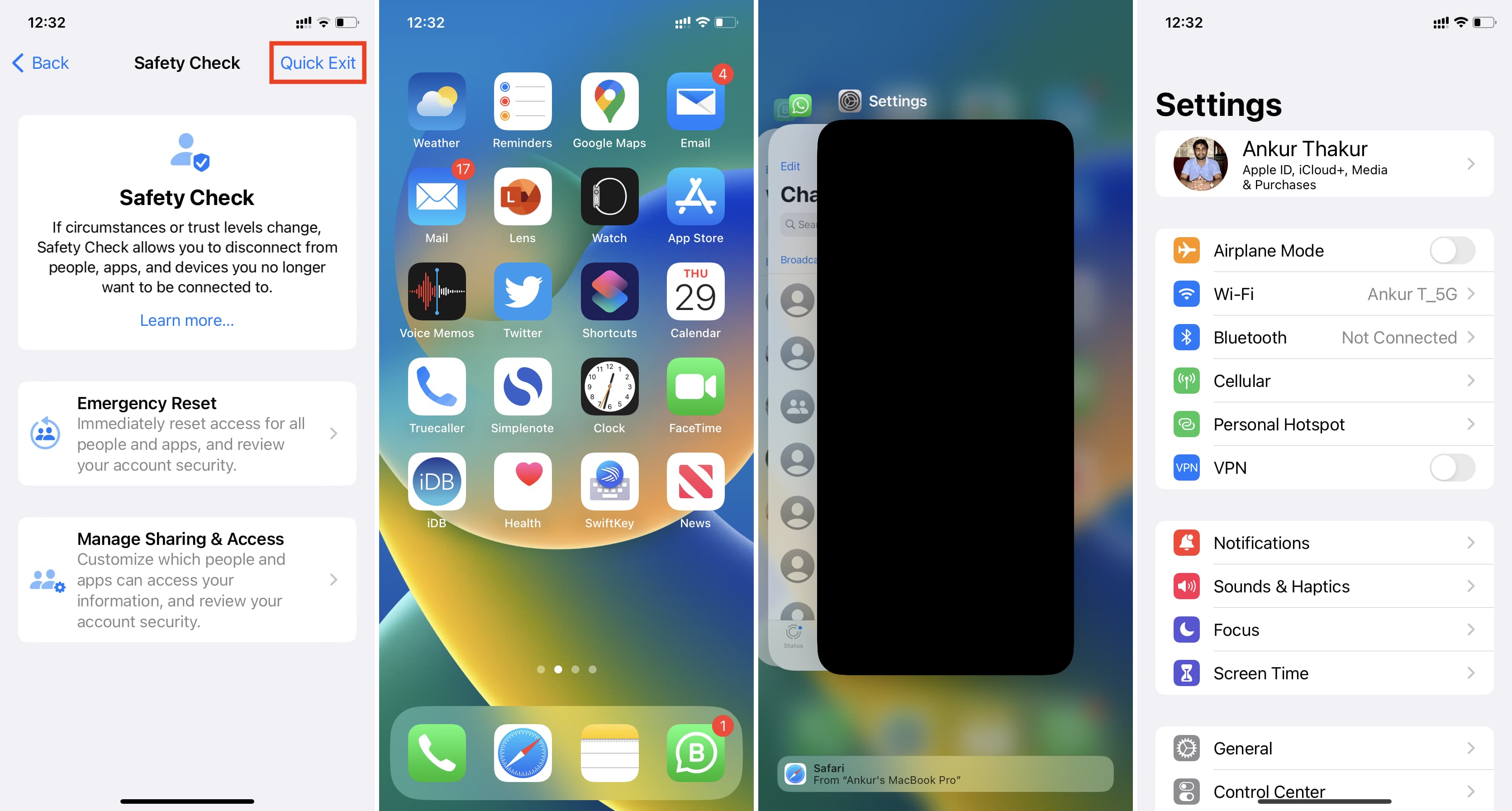
ii. Emergency Reset
As the name suggests, Emergency Reset is to be used in grave situations when you don’t have time to individually look at people, app, and device permissions.
Start by tapping Emergency Reset and authenticate via Face ID or Touch ID. Next, tap Start Emergency Reset.
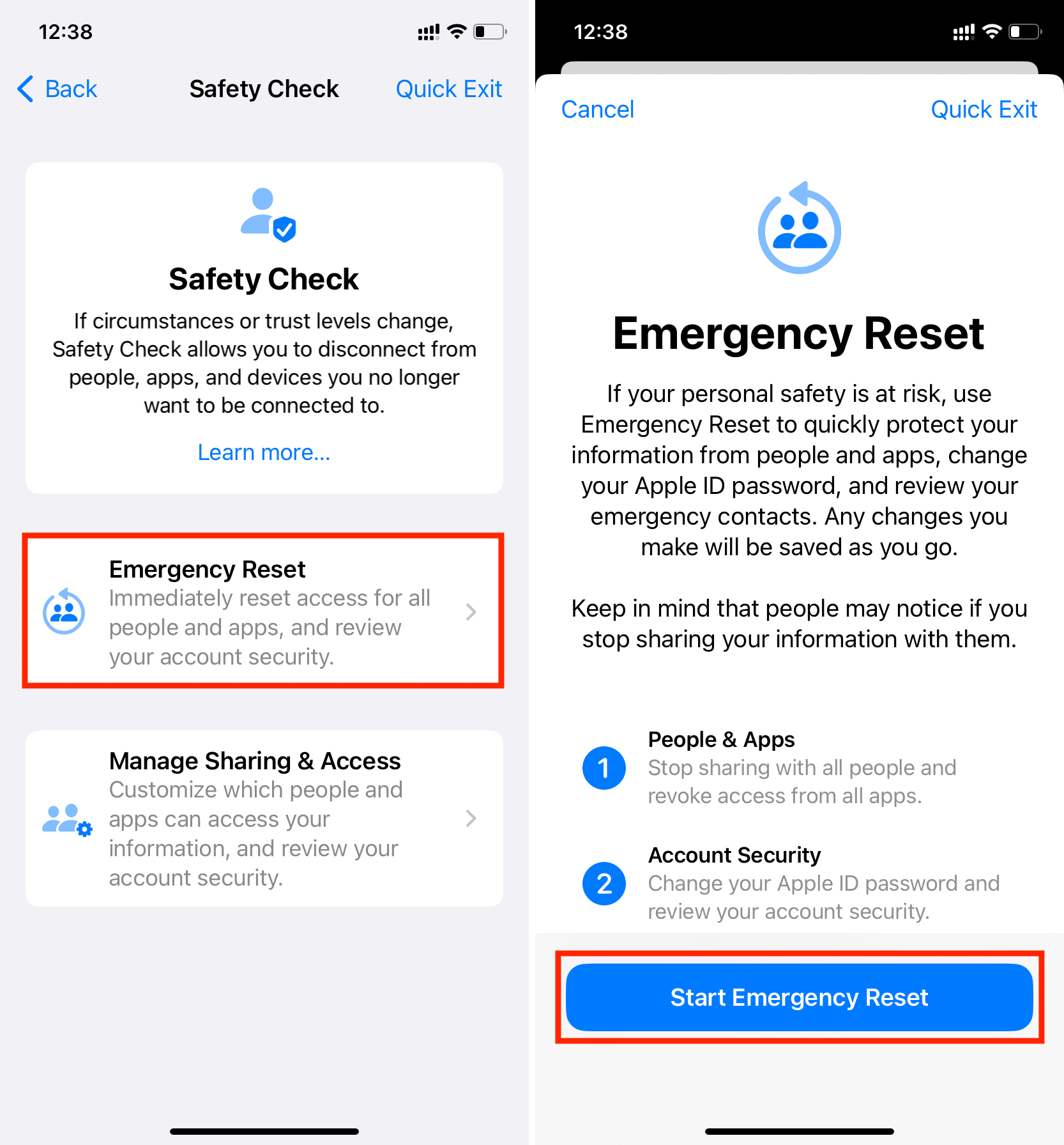
First, you have the option to Reset People & Apps. If you tap the blue Reset People & Apps button, it will immediately stop sharing anything you’re currently sharing with other people, such as your location. All app permissions will also be revoked.
The next step relates to Account Security. With this, you can change your Apple ID password and review your account security. If you had shared your Apple ID password with anyone, make sure you do this so they can no longer sign in to any device or on iCloud.com using your Apple ID. It will prevent them from accessing your iCloud notes, contacts, passwords, photos, and other data stored in your iCloud and iCloud Drive.
Finally, you have the Emergency Contacts screen. This lets you add or remove emergency contacts. When you were in a relationship, you might have added that person’s phone number as your emergency contact. But since the situation is different now, you might want to remove their number and use the phone number of a family member, friend, or other trusted person as your emergency contact.
In summary, your iPhone will do the following after you complete Emergency Reset:
- If you were sharing your location from Find My, it would immediately stop.
- All app privacy permissions like Bluetooth, Contacts, Calendars, Location, Microphone, Camera, etc., will be reset. Apps will have to ask for your consent to use them again at next launch.
- If you use iMessage and FaceTime on other devices (like Mac, iPad, or another iPhone), it will no longer work on those and only be limited to work on the iPhone from where you have chosen to use Emergency Reset.
iii. Manage Sharing & Access
Finally, you have the option to manually review people and apps and revoke their privileges on a per-case basis. In the end, you can also review your account security and change your device or Apple ID password if required.
Begin by tapping Manage Sharing & Access and authenticate via Face ID or Touch ID. After that, tap Continue.

Step 1: Sharing with People
People: You can see what you’re sharing with people. Tap the name of the person and choose Review Sharing. After that, select what you want to stop sharing (like Find My location, Health data, notes, photos, calendar) and tap Stop Sharing. Next, you can continue with your audit or choose to review permissions for more people.
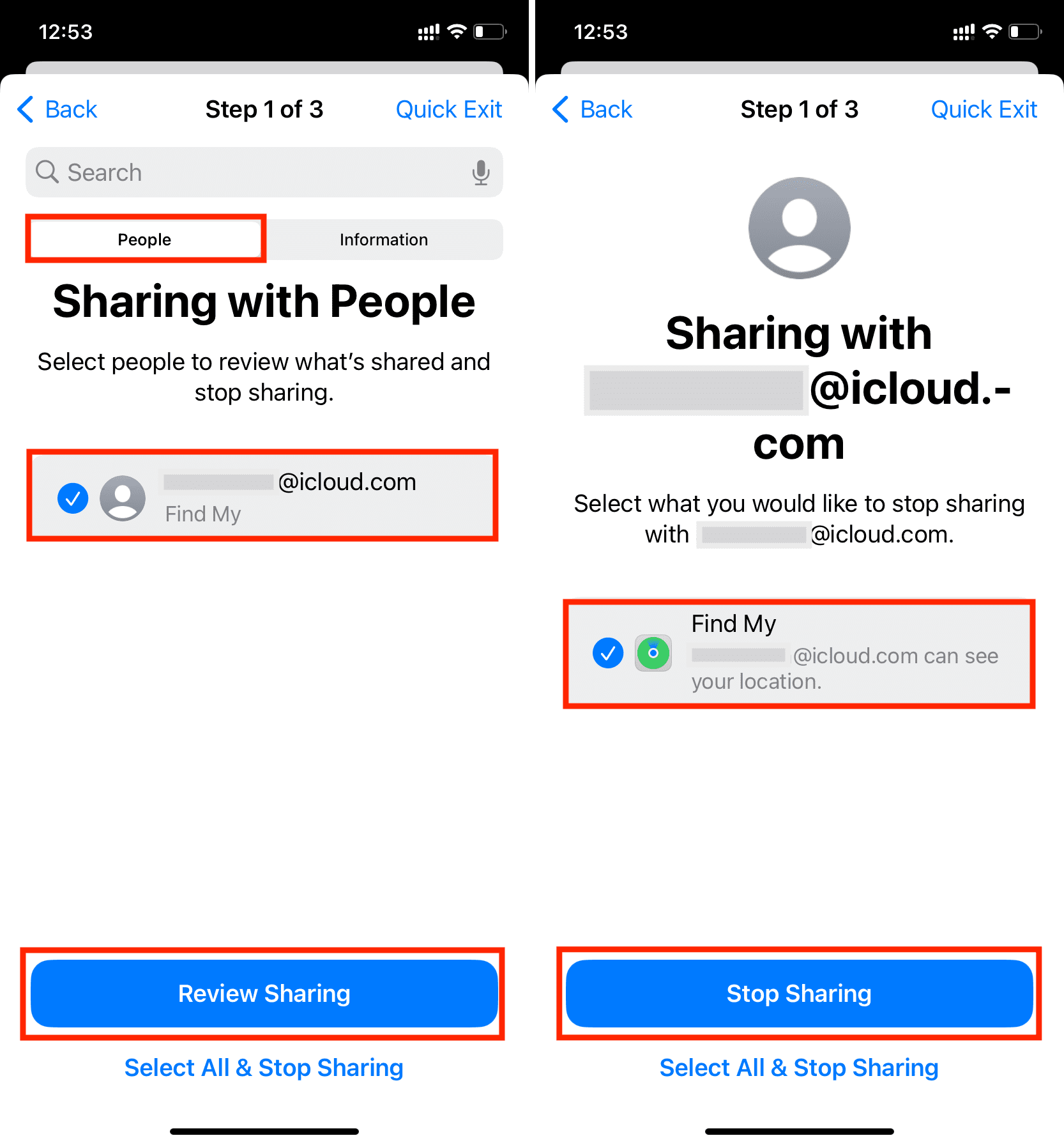
Information: If you don’t want to review and revoke permission based on people but rather the type of information (such as location sharing), tap Information from the top. Here, select the category of information like Find My location, Health data, shared photo album, shared calendars, and tap Review Sharing. Next, pick the person you want to stop sharing that information with and tap Stop Sharing.
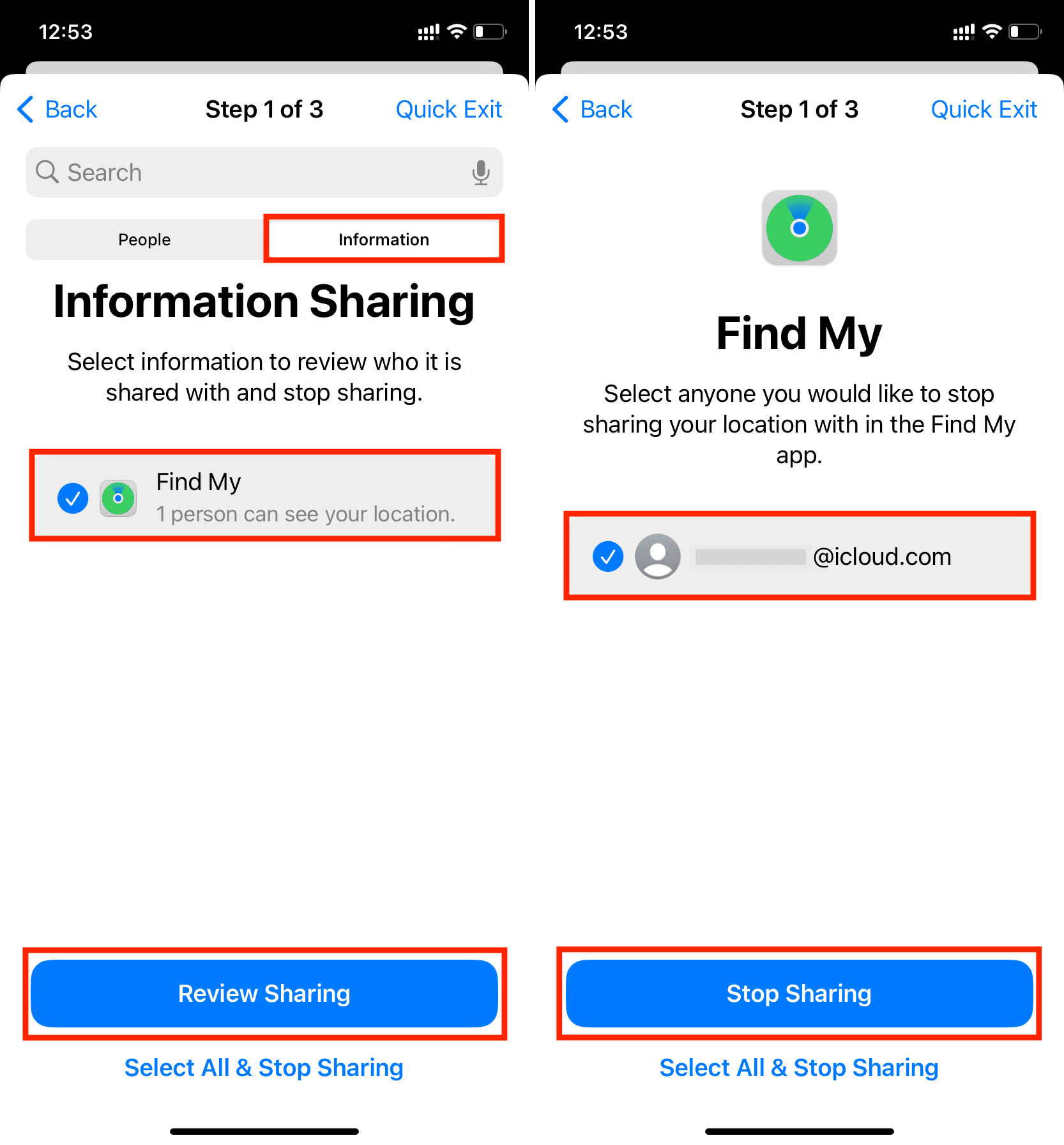
Step 2: App Access
After you finish auditing what information you share with people, you get to the second step, which lets you see what you have allowed apps to access.
From here, you can choose one of more apps and Stop App Access for the information (Bluetooth, Location, Camera, Microphone, Photos, Contacts) they have access to.
Instead of the app, you can also tap Information and stop all apps from accessing that. For example, you can choose Location and tap Stop App Access. This will terminate the location privileges for all apps that currently have access to your location.
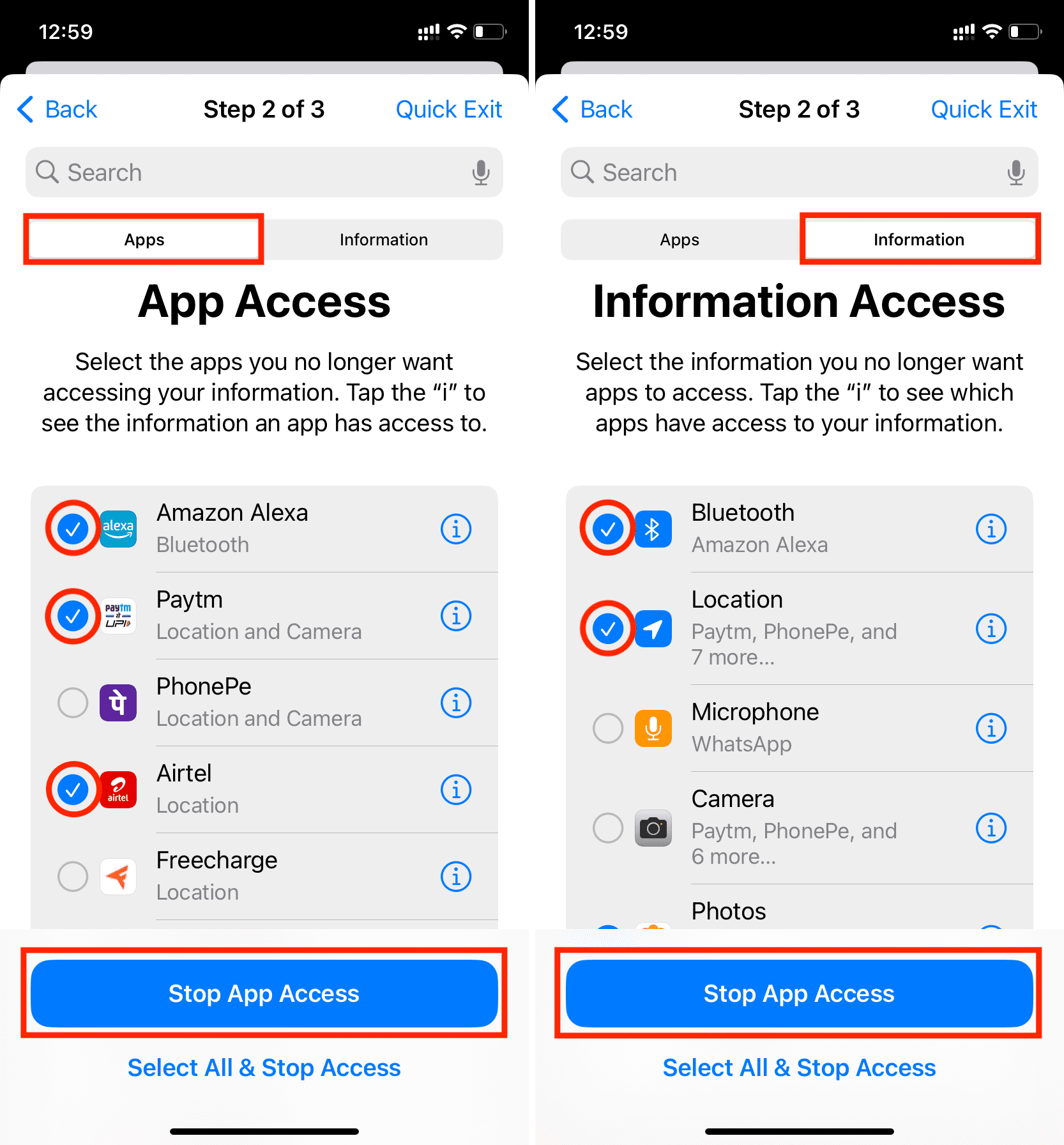
Step 3: Devices
Finally, in the last step, you can manage your Apple devices and personal settings.
Here, you will see all the devices where you have logged in using your Apple ID. If you think there is a device you no longer have access to or it’s shared by other people (like an iPad with your Apple ID that’s always in your living room), you can select it and tap Remove Selected Devices. This will prevent sign-in codes from being sent to this device, and your iCloud services will also not work on it until you sign in again.
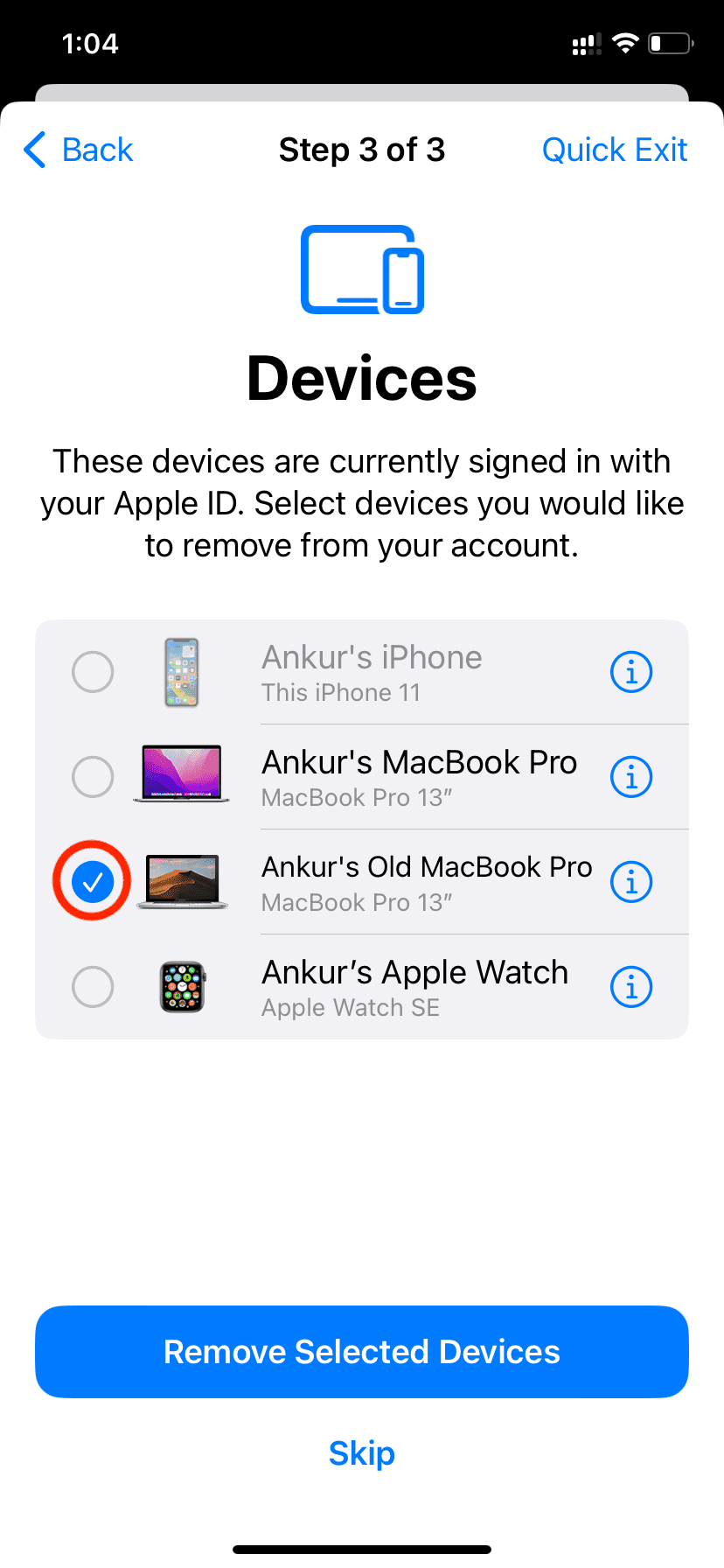
Next, you get to the Trusted Phone Numbers screen. While in a relationship, you might have added that person’s phone number as a backup to receive 2FA codes. From here, you can remove that by tapping the red minus button. You can also add a different trusted number.
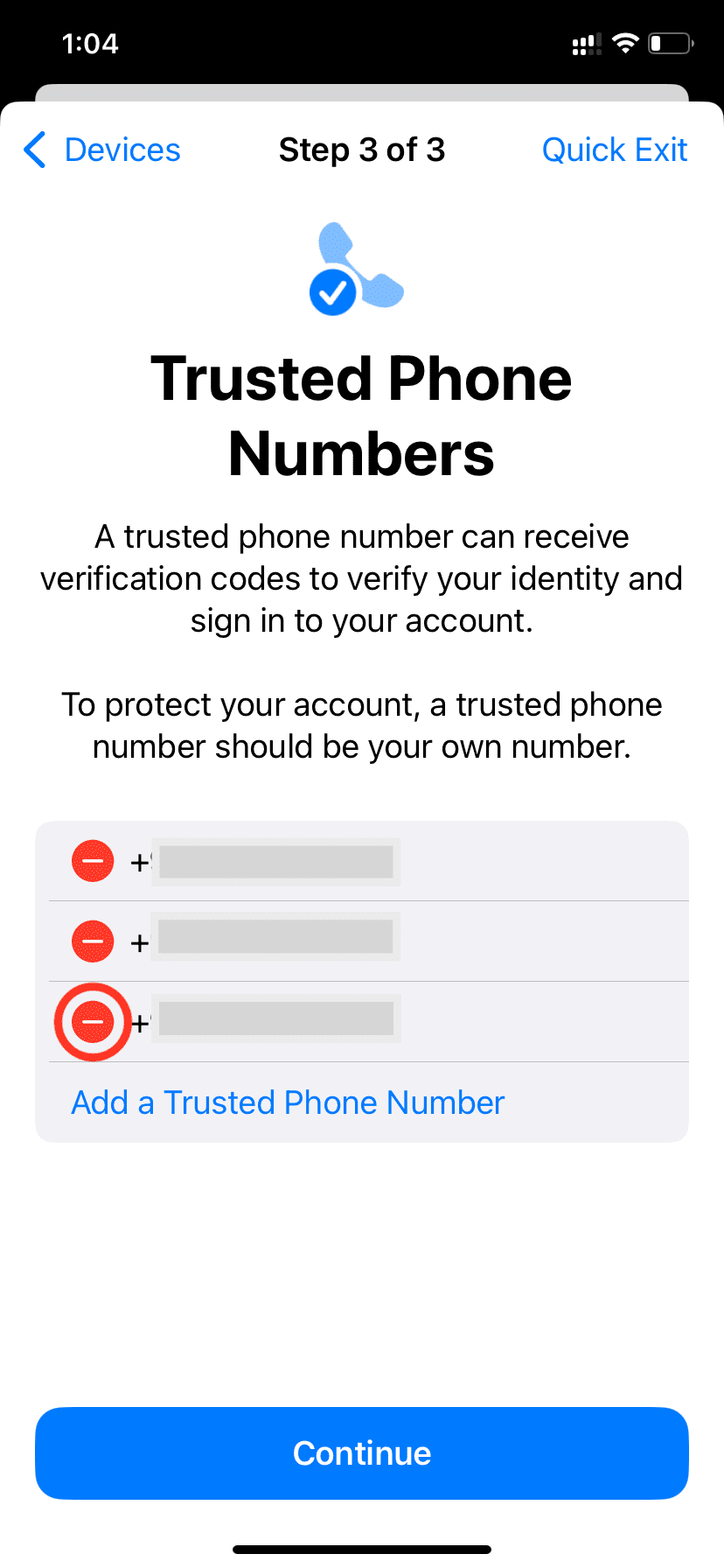
After that, you get the option to Update Apple ID Password. If you think the other person knows your Apple ID password, tap Update Password to change it.
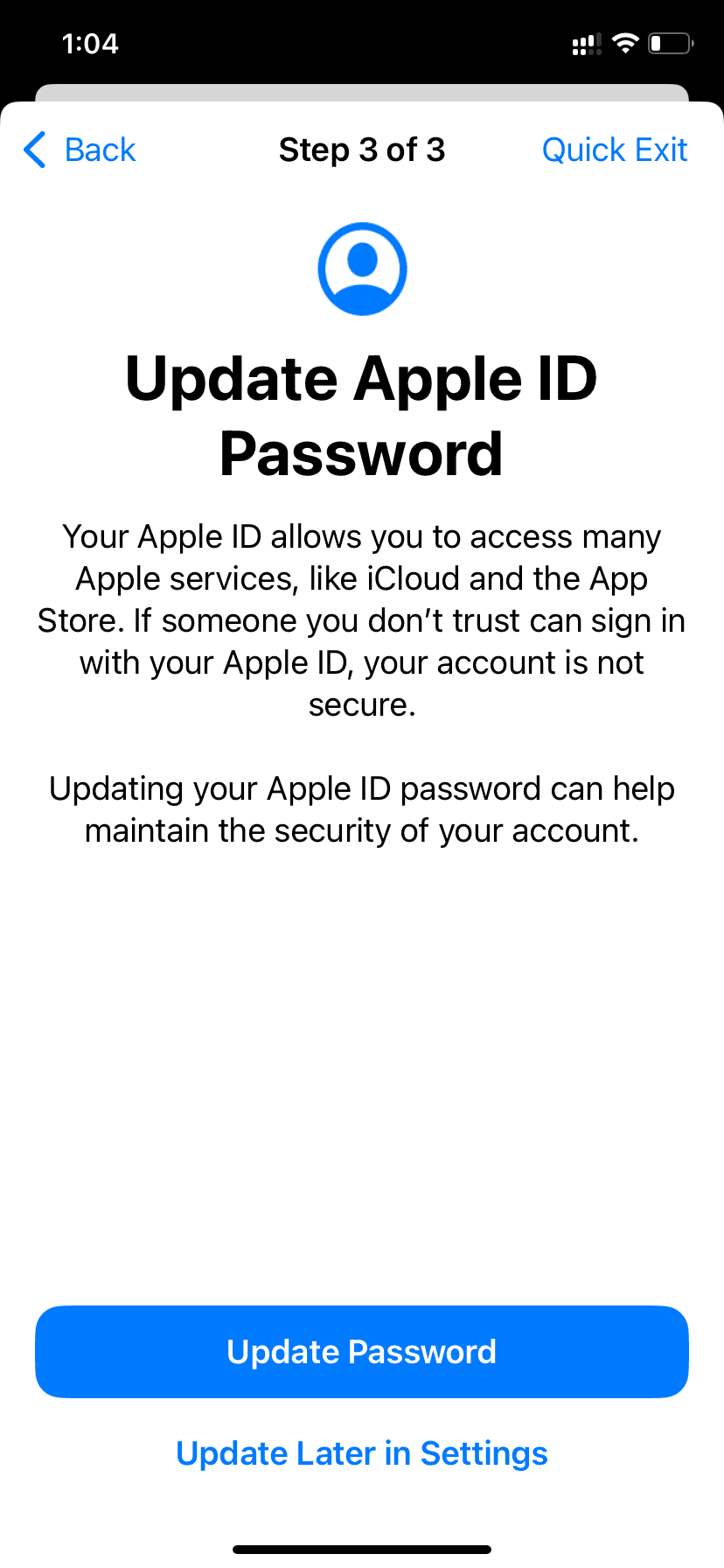
Next, you see the Emergency SOS screen. From here, you can remove and add emergency contacts.
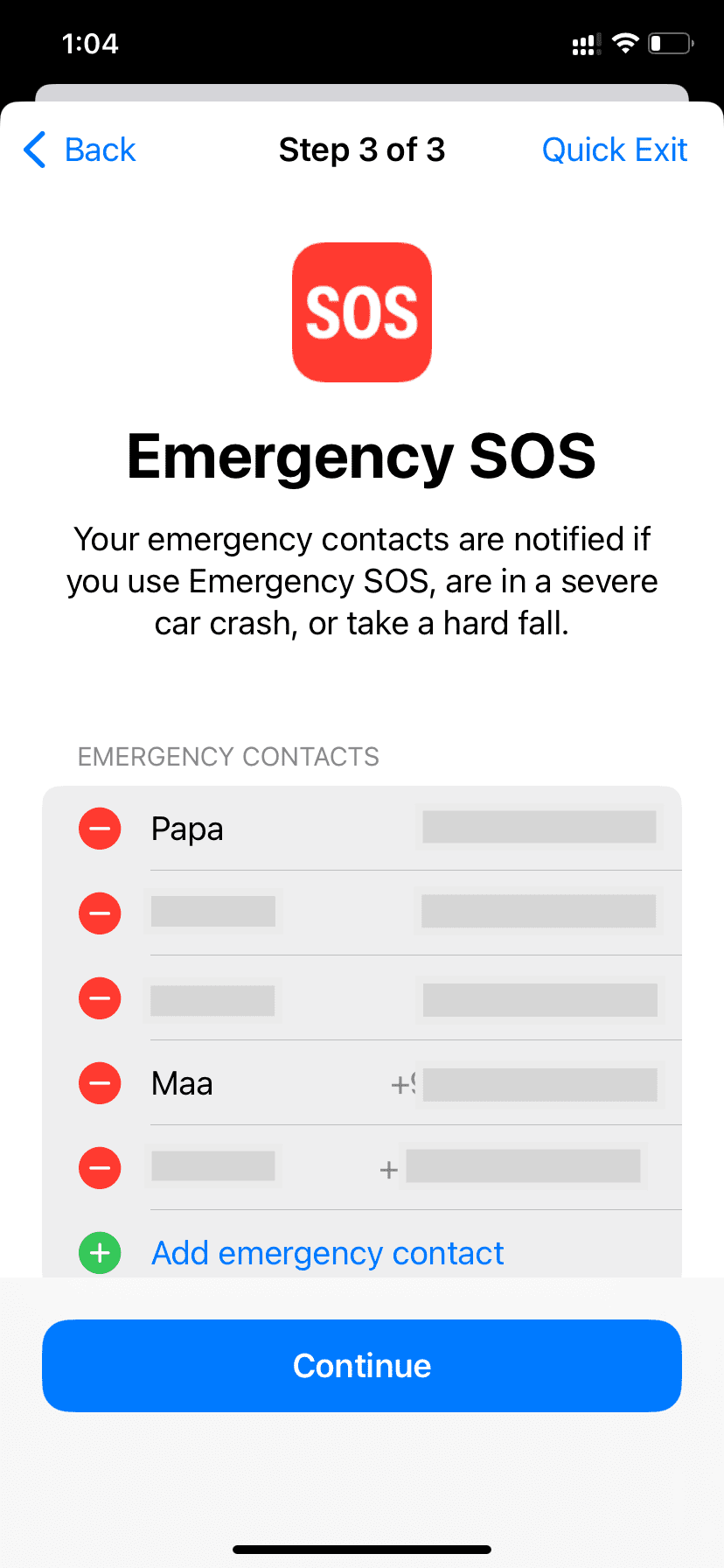
Once that’s done, your iPhone gives you the option to Update Device Passcode. While you were in a relationship, the other party likely knew your iPhone’s passcode. If someone knows your device passcode, they can access practically everything on your iPhone. To prevent this, you should change it.
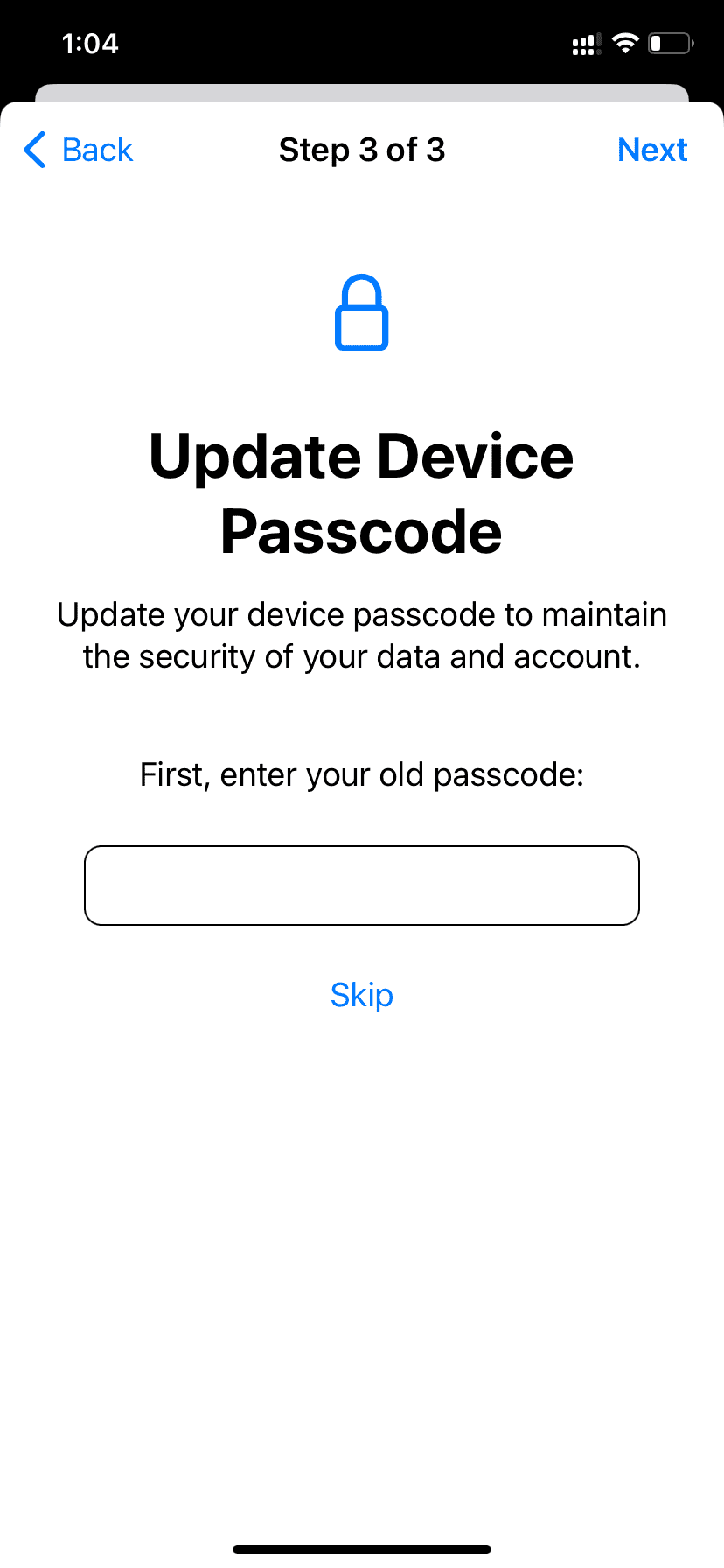
If you have set another person’s Face ID as an alternate appearance, you will get the option to Reset Face ID. Once done, the other person can’t get inside your iPhone via Face ID authentication.
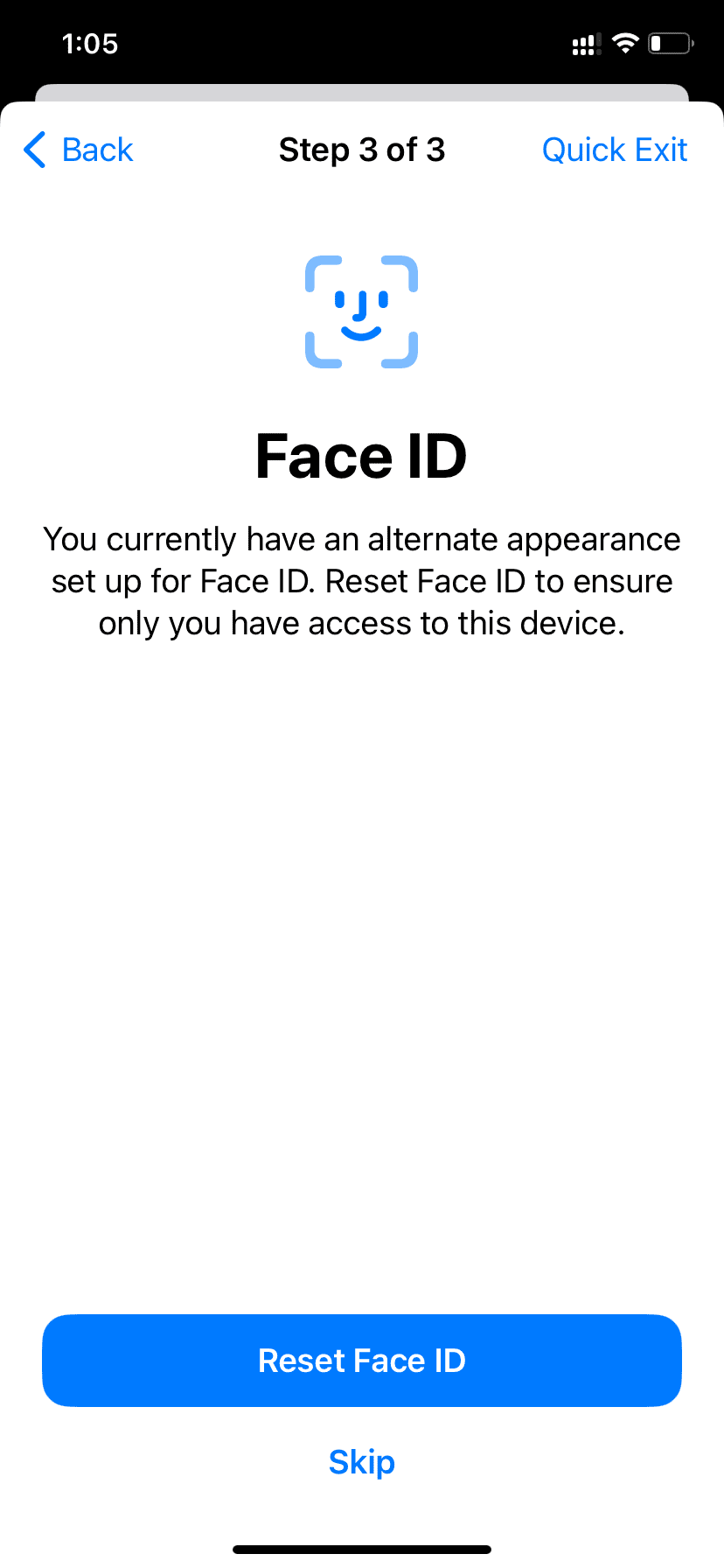
After finishing the above checks, you will be greeted with the Safety Check Complete screen. Any changes you might have made earlier are in effect now. On this screen, you can also go through some additional tips to secure your account, data, and devices.
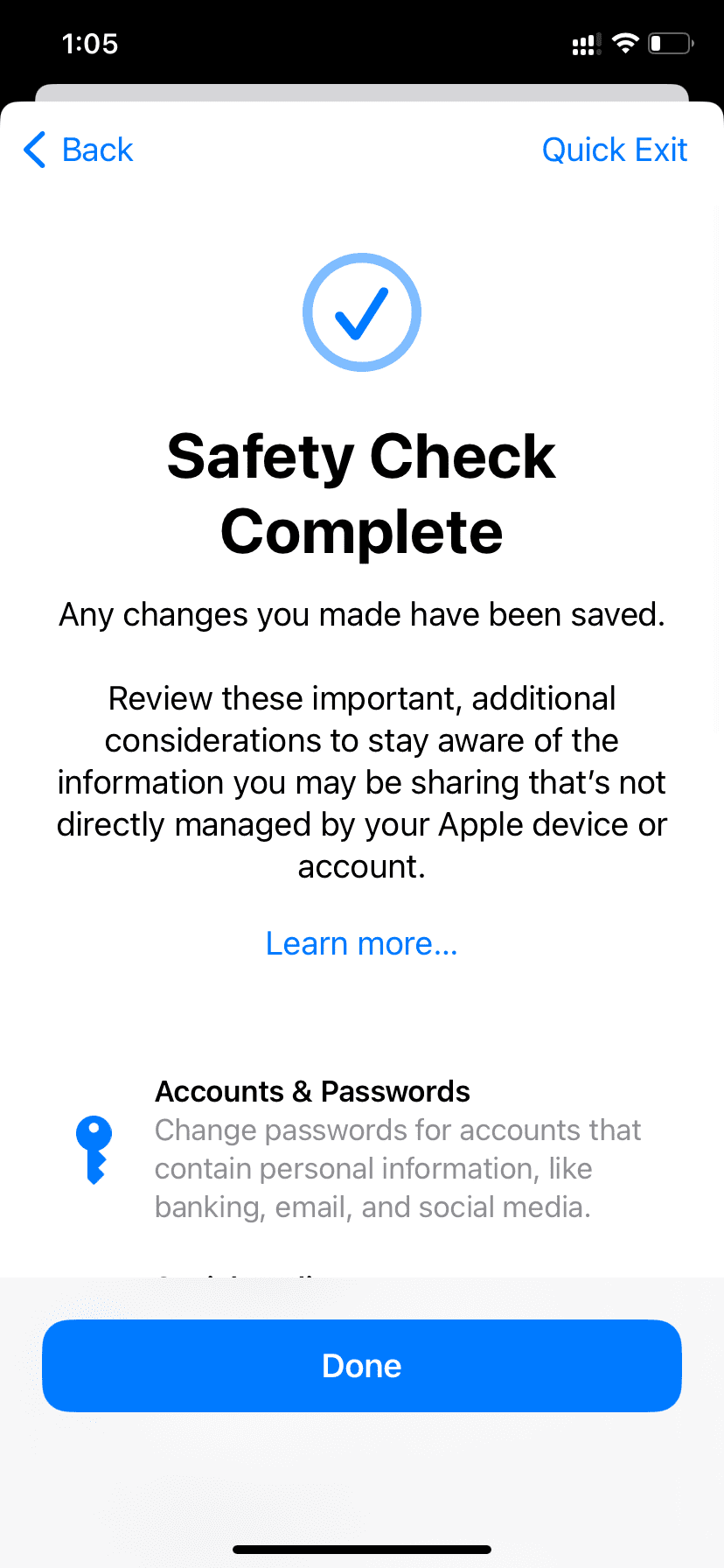
Safety Check is an excellent addition people must know about
This is how to use Safety Check on iPhone in iOS 16 to keep yourself and your data safe.
I hope this tutorial was helpful to you. If you think someone you know might benefit from this, kindly share this post with them.
Check out next:
- 17 tips to secure your iPhone
- How to add your medications to your iPhone and get reminded to take them on time
- How to completely sign out of Gmail on iPhone or iPad (even from a remote location)
- Steps to hide an Amazon order from your purchase history
- How to lock your WhatsApp chats on iPhone like a pro